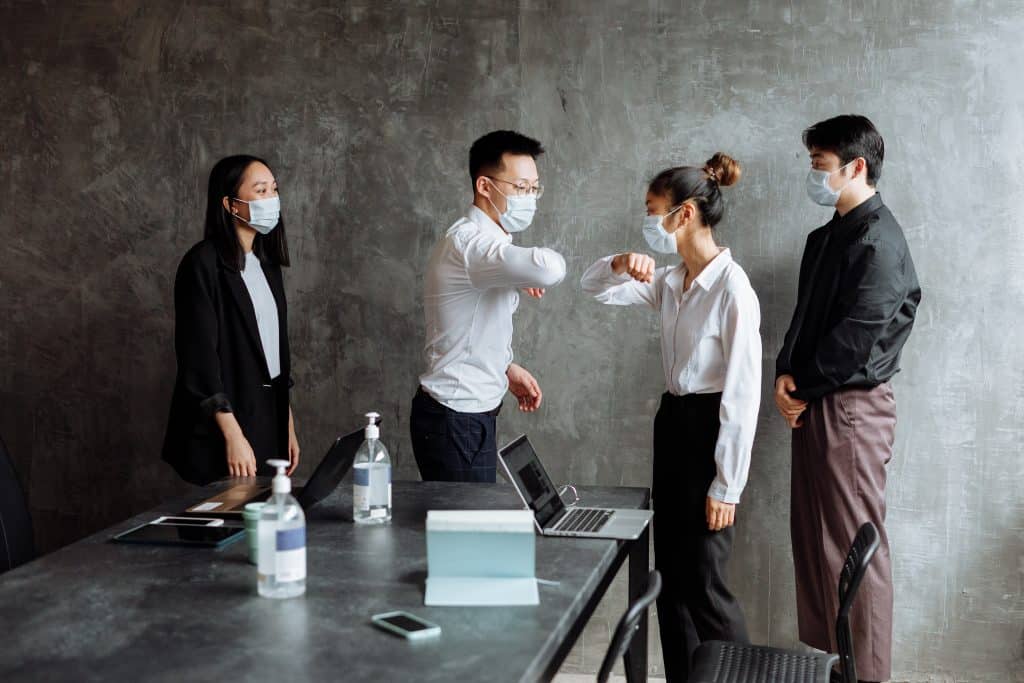Having employees return to the normal workplace as the COVID-19 pandemic winds down will not be as simple as just going back to the way it was pre-pandemic days. Our lives and our work environment have been altered drastically. Vaccinations have reduced the level of concern somewhat but have not eliminated all threats of the virus. Precautions must be in place to ensure the continued safety of employees, their families, and clients.
Necessity of Return
One of the first considerations is whether or not employees must return to the workplace. After more than a year of experience working remotely, many workers have become accustomed to performing most or all of their functions away from the office. It may not be required that they change the way they perform their activities. For some workers, this may have become an attractive aspect of their job. For the company, there could be significant savings in office space if fewer employees need to be centrally located.
Safe Workplace

As of when this article was written, a private company can mandate vaccines as part of their policies and procedures. In general, it is recommended to offer vaccines or encourage vaccines on a voluntary basis. One must consider reasonable accommodations for employees with disabilities (ADA) and those employees whose religious beliefs conflict with receiving a vaccine. COVID-19 vaccines can be a condition of employment and absent of a medical or religious exemption an employer can terminate employees who don’t comply. Employers are permitted to ask employees if they have been vaccinated against COVID. Caution should be taken to avoid soliciting info related to a medical condition. The requirements vary by state and also under the ADA guidelines. The CDC provides detailed information regarding mandates.
It looks as if even if the majority of employees are vaccinated, PPE (Personal Protection Equipment) will be with us for some time. Screening of employee’s health and providing gloves, sanitizers, and shields will become standard workplace additions. Some employees will still be reluctant to join in a confined environment without absolute assurance that anyone they contact is virus-free. Daily screening may become the norm as the workday starts.
Workplace Geography
Desks jammed together with workers facing each other a few feet away will no longer be the norm. Although the “six feet rule” may be relaxed as we gain more immunity, organizations will need to expand distances and rearrange furniture until the pandemic is clearly passed. Procedures for contactless meetings and transfer of products or documents need to be designed to help avoid any contagion. Greetings with in-person customers should endeavor to keep socially distanced and avoid actual contact.
Employee Education
Although we have all seen news regarding COVID-19 procedures when encountering non-family members, many of us have become complacent in our own homes. Signs should be posted visibly at the workplace reminding employees and clients to continue practicing social distancing and to wear face masks. Hand washing and sanitizing of common areas should be an ongoing procedure. Phones, desks, and computers should be wiped down between users, and a thorough sanitizing done at the end of each shift.
HR Implications
For employees who have not been on active status or not working remotely, there are many Human Resources implications. These have to be carefully considered and established procedures followed to ensure fairness to all workers and to comply with all applicable laws. Furloughed employees must be considered for health insurance, 401(k) purposes, and compensation issues. Have salary increases or bonuses been missed? Has the employee withdrawn savings plan funds? How will breaks in employment be handled? Much of this is new to most businesses not used to laying off workers. It can be a complex issue for those not well versed in Human Resources procedures and legal compliance. Unless your organization has experience in reinstating furloughed workers, a consultant with considerable knowledge should be engaged to help you better understand the process.
The “return to work” process may seem as overwhelming as the initial shutdown was to many organizations. If you are unclear as to what specific steps to take as you try to get back to normal, Klein-HR Solutions is here to help
Contact Klein HR Solutions:
Call (305) 775-5640
E-mail: [email protected]
https://www.cdc.gov/coronavirus/2019-ncov/daily-life-coping/returning-to-work.html

